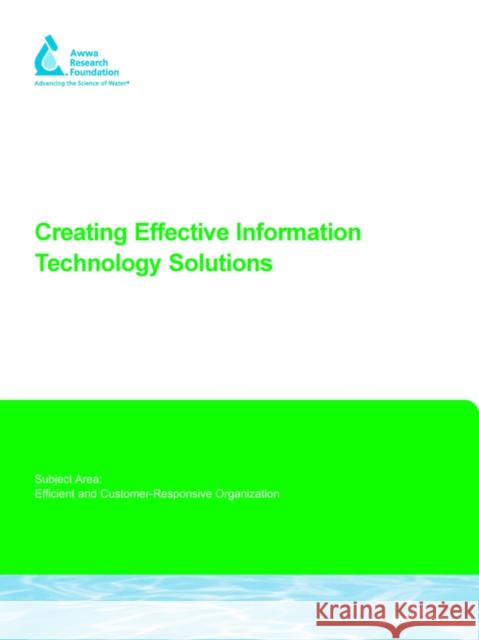Creating Effective Information Technology Solutions » książka
Creating Effective Information Technology Solutions
ISBN-13: 9781843398776 / Angielski / Miękka / 2004 / 188 str.
Technology offers one of the significant levers that utility managers have available to truly "do more with less." But it often is difficult for managers to know how much to spend on technology, where the expenditures should be, and what the expected return on that investment should be. The objective of this study was to determine successful approaches for implementing utility IT systems considering the range of factors influencing today's utility IT environment. The study cites leading practices that create effective IT solutions (not technology-specific solutions). While specific technology evolves quickly, what does endure are the management and business practices around how technology is selected, implemented, used, and managed. Those practices are process-oriented, repeatable, and measurable and are the focus of this project. A benchmarking consortium of 13 leading North American utilities and three research organizations was formed to initiate the research project, drawing on utilities that included leading practitioners in many IT areas, all of whom wanted to improve their IT effectiveness. The following steps summarize the overall project approach: Plan: Secondary research identified IT practice elements and grouped them into focus areas that significantly contribute to the effectiveness and value of IT services. Collect data: For each focus area, specific practice elements and metrics were developed to identify leading practices using a survey instrument. Analyze data: Completed surveys from the consortium were analyzed to identify case study candidates. Benchmarking partners were identified via the same survey to complement areas for other best practices. Report effective practices: Detailed survey information, analyses, and conclusions were documented from the case studies. The survey results of the case studies were compared to the other participating utilities. A number of observations and possible implications were drawn from the findings. In general, the average scores of the case studies were notably higher than the average scores of the participating utilities, indicating that the case study organizations do derive greater results from their technology investments. Some other key differences were noted between the case studies and other respondents. In general, the case study organizations: have a higher total annual revenue per customer for all services provided; have a lower IT budget as a percentage of total operating budget; have a higher percentage of internal IT staff (versus external contractors); have a higher training budget as a percentage of total IT budget; and support fewer PCs per IT staff. Possible implications and additional research hypotheses could be drawn from the observations including the extent to which investments should be made in training, staff levels, and redesigning internal practices, compared to hardware and software investments. Ensuring that value is received from an investment in information technology requires constant attention and skilled management. Information technology is a very young field-just barely 50 years old. This has many implications, including the ongoing and continuous development of new technologies. This causes misguided thinking that it is the technology that is important, rather than how technology is employed and the changes that technology enables. Because the science of information technology is still developing so rapidly, "leading" or "best" practices will also need to be developed and evolve quickly. It is important to continue searching for the most effective means of ensuring value for IT investments.











